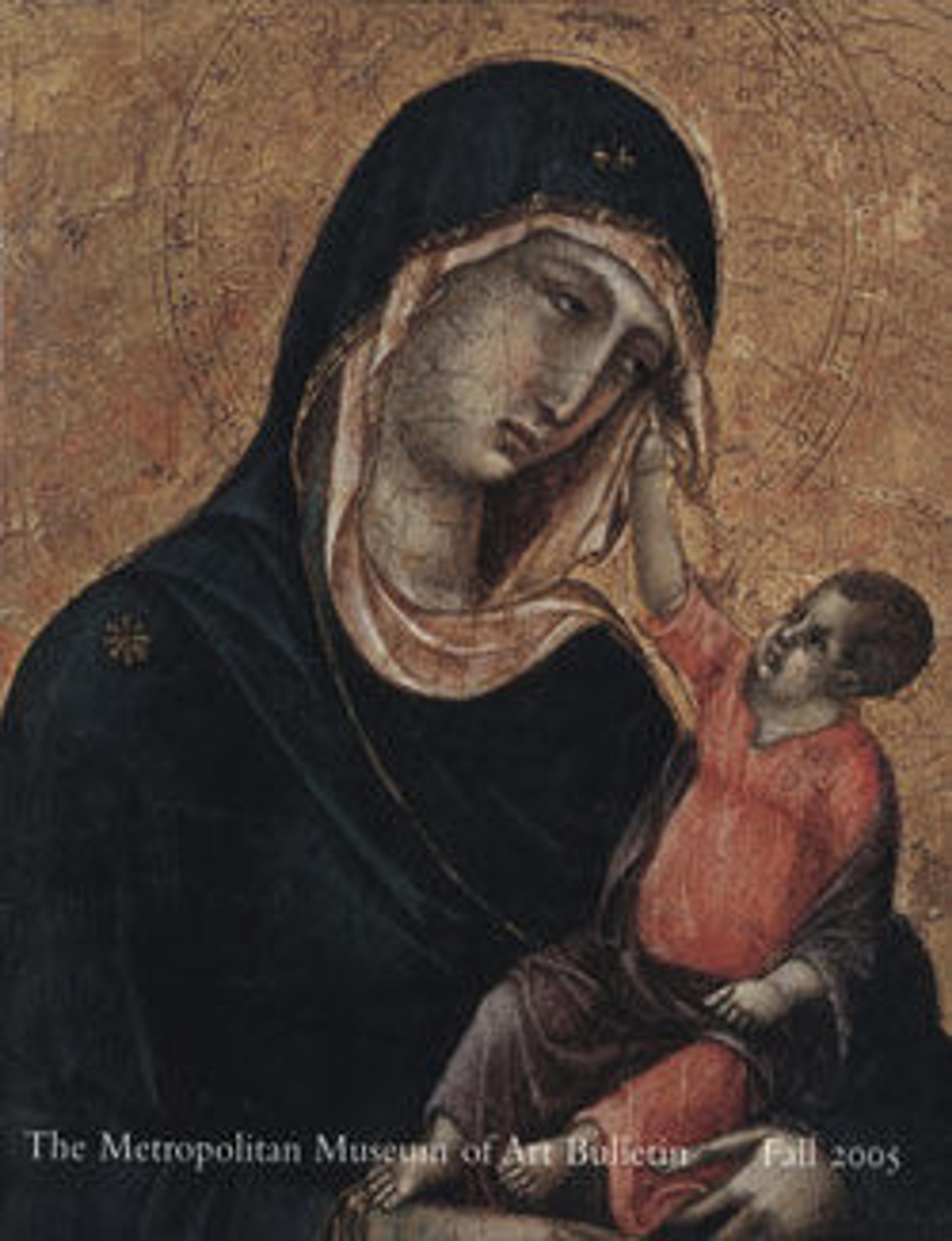Landscape
A narrow body of water is surrounded by land on three sides, with the fourth opening to allow a slender sailboat to come into view. Contrasting ink tones, from coal black to pearl gray, are united by the watery gray wash.
Around 1699 the painter of this small, lyrical landscape helped the legendary Rinpa masters Ogata Kōrin (1658–1716) and his younger brother Kenzan (1663–1743) in their venture into the commercial production of decorated ceramics. Watanabe Shikō, then still a teenager, decorated some of their wares with Kano-style painting. Shikō subsequently created a style of his own, in which he successfully synthesized the academic orthodoxy of the Kano school and the decorative style of Rinpa.
Around 1699 the painter of this small, lyrical landscape helped the legendary Rinpa masters Ogata Kōrin (1658–1716) and his younger brother Kenzan (1663–1743) in their venture into the commercial production of decorated ceramics. Watanabe Shikō, then still a teenager, decorated some of their wares with Kano-style painting. Shikō subsequently created a style of his own, in which he successfully synthesized the academic orthodoxy of the Kano school and the decorative style of Rinpa.
Artwork Details
- 山水図屏風
- Title: Landscape
- Artist: Watanabe Shikō 渡辺始興 (Japanese, 1683–1755)
- Period: Edo period (1615–1868)
- Date: first half of the 18th century
- Culture: Japan
- Medium: Two-panel folding screen; ink on paper
- Dimensions: Image: 59 7/16 × 66 9/16 in. (151 × 169.1 cm)
- Classification: Paintings
- Credit Line: Purchase, Friends of Asian Art Gifts, 2004
- Object Number: 2004.366
- Curatorial Department: Asian Art
Audio
8821. Landscape, Part 1
0:00
0:00
We're sorry, the transcript for this audio track is not available at this time. Please email info@metmuseum.org to request a transcript for this track.
Listen to more about this artwork
More Artwork
Research Resources
The Met provides unparalleled resources for research and welcomes an international community of students and scholars. The Met's Open Access API is where creators and researchers can connect to the The Met collection. Open Access data and public domain images are available for unrestricted commercial and noncommercial use without permission or fee.
To request images under copyright and other restrictions, please use this Image Request form.
Feedback
We continue to research and examine historical and cultural context for objects in The Met collection. If you have comments or questions about this object record, please complete and submit this form. The Museum looks forward to receiving your comments.
